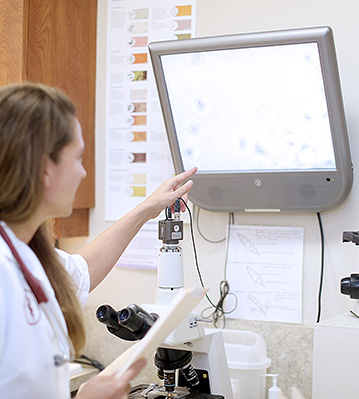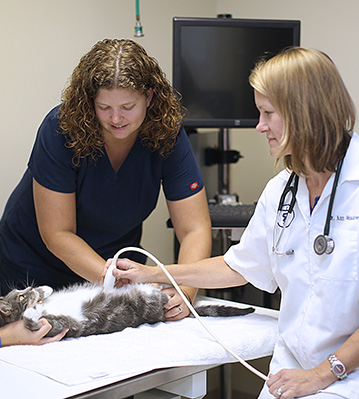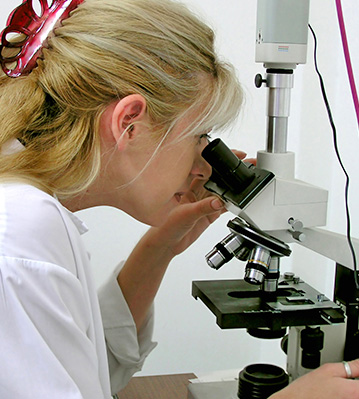| By Appointment: | |
| Mon–Fri | 8am–5:30pm |
| Walk-in and Appointments for Established Clients: | |
| Sat | 8:00am–11:30am |
| Sun | Closed |
Wednesday:
Closed 1st & 3rd Weds of each month 12–1:30pm
| Mon–Fri | 7am–6pm |
| Walk-in and Appointments for Established Clients: | |
| Sat | 8am-12pm |
| Sun | Closed |
Wednesday:
Closed 1st & 3rd Weds of each month 12–1:30pm

There are few more commonly relied upon medical tools than radiographs - also known popularly as X-rays. As part of our commitment to provide you with the best medical care for your pet, Matthews Animal Clinic has invested in a state-of-the-art digital X-ray machine. There are many important advantages to digital X-rays:
X-rays are useful in examining your pet's bones, lungs, heart, abdomen, oral cavity and other areas. Digital radiographs can also help our veterinarians identify a fractured bone, cancerous tumors, heartworm disease or an obstruction or foreign body in your pet's stomach.

Ultrasound is a painless, safe, non-invasive procedure the medical team at Matthews Animal Clinic uses to evaluate your pet’s internal organs. Using sound waves, ultrasound produces a real-time moving picture of your pet’s organs that allows us to visualize objects that cannot be detected by X-rays alone.
At Matthews Animal Clinic, we use ultrasounds to assess the shape, size, tissue density, internal structure, and position of your pet’s abdominal organs, initially assess cardio-thoracic health, and diagnose pregnancy. It can also be used to identify masses or tumors and as a guide during surgical aspirates. This method of medical evaluation is just one of the many ways we strive to give you peace of mind when it comes to your pet’s health.

When performing routine wellness examinations or diagnosing an illness, what our veterinarians can't see is as important, if not more important, that what they can see. Our in-house laboratory is equipped to perform a variety of diagnostic procedures for your pet, from blood counts and parasite identification to urinalysis and serum chemistries. These laboratory tests help us diagnose acute symptoms easily and accurately, reducing your pet's stress and discomfort during hospital visits.
Endoscopy is a nonsurgical procedure preformed under anesthesia that is used to examine portions of the digestive tract. The endoscope is a felixible tube with a light and a camera attached so that we can view pictures of the digestive tract on a monitor in real time.
Endoscopy is used to: